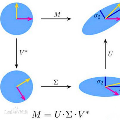This paper introduces a novel computational approach termed the Reduced Augmentation Implicit Low-rank (RAIL) method by investigating two predominant research directions in low-rank solutions to time-dependent partial differential equations (PDEs): dynamical low-rank (DLR), and step and truncation (SAT) tensor methods. The RAIL method, along with the development of the SAT approach, is designed to enhance the efficiency of traditional full-rank implicit solvers from method-of-lines discretizations of time-dependent PDEs, while maintaining accuracy and stability. We consider spectral methods for spatial discretization, and diagonally implicit Runge-Kutta (DIRK) and implicit-explicit (IMEX) RK methods for time discretization. The efficiency gain is achieved by investigating low-rank structures within solutions at each RK stage using a singular value decomposition (SVD). In particular, we develop a reduced augmentation procedure to predict the basis functions to construct projection subspaces. This procedure balances algorithm accuracy and efficiency by incorporating as many bases as possible from previous RK stages and predictions, and by optimizing the basis representation through SVD truncation. As such, one can form implicit schemes for updating basis functions in a dimension-by-dimension manner, similar in spirit to the K-L step in the DLR framework. We also apply a globally mass conservative post-processing step at the end of each RK stage. We validate the RAIL method through numerical simulations of advection-diffusion problems and a Fokker-Planck model, showcasing its ability to efficiently handle time-dependent PDEs while maintaining global mass conservation. Our approach generalizes and bridges the DLR and SAT approaches, offering a comprehensive framework for efficiently and accurately solving time-dependent PDEs with implicit treatment.
翻译:暂无翻译




